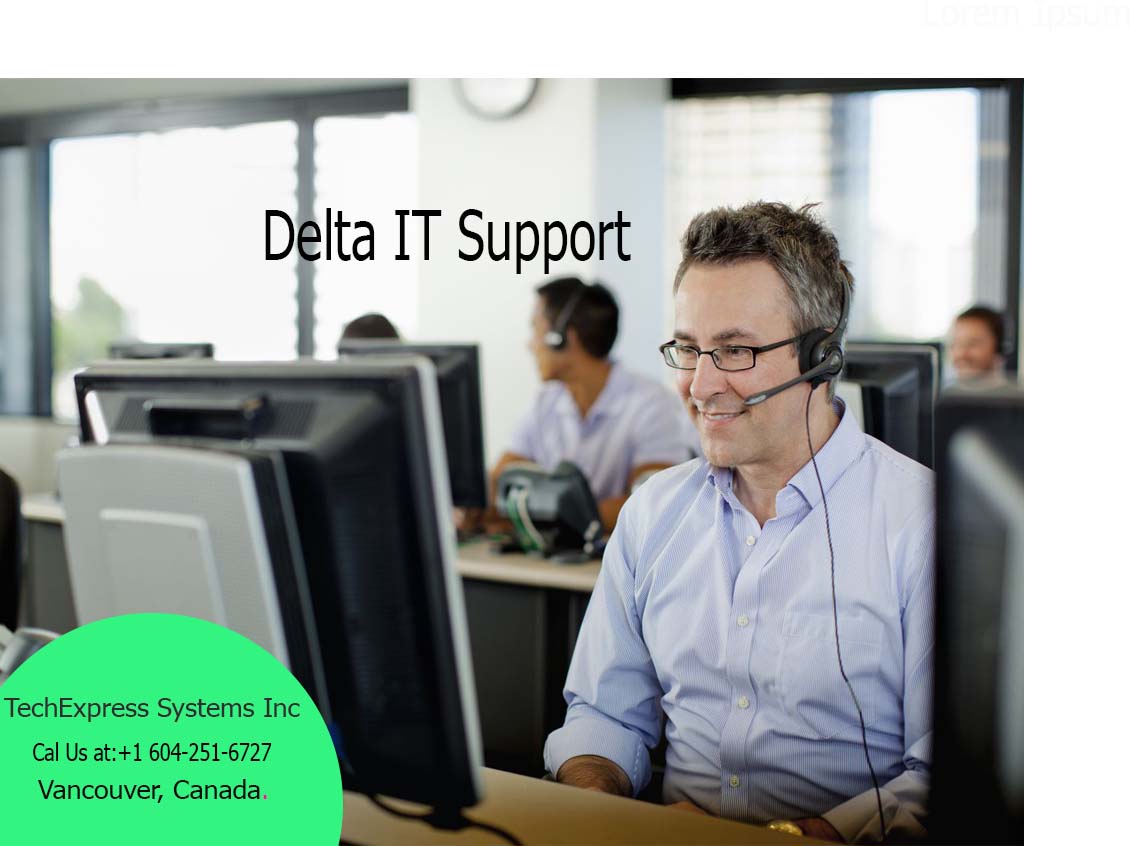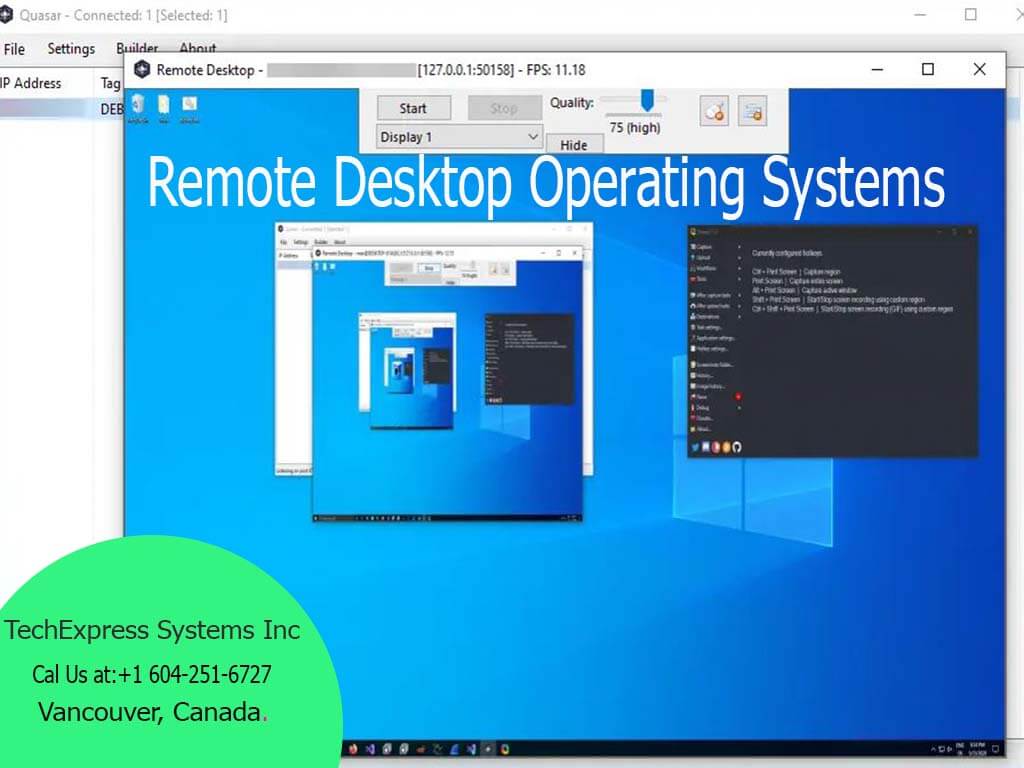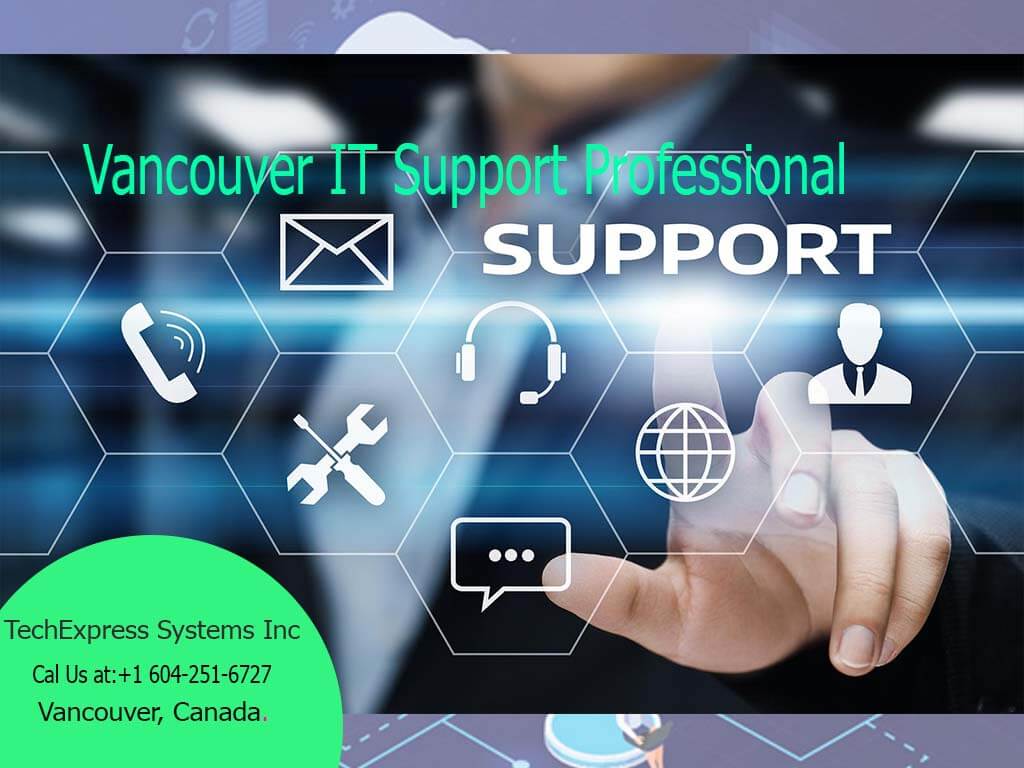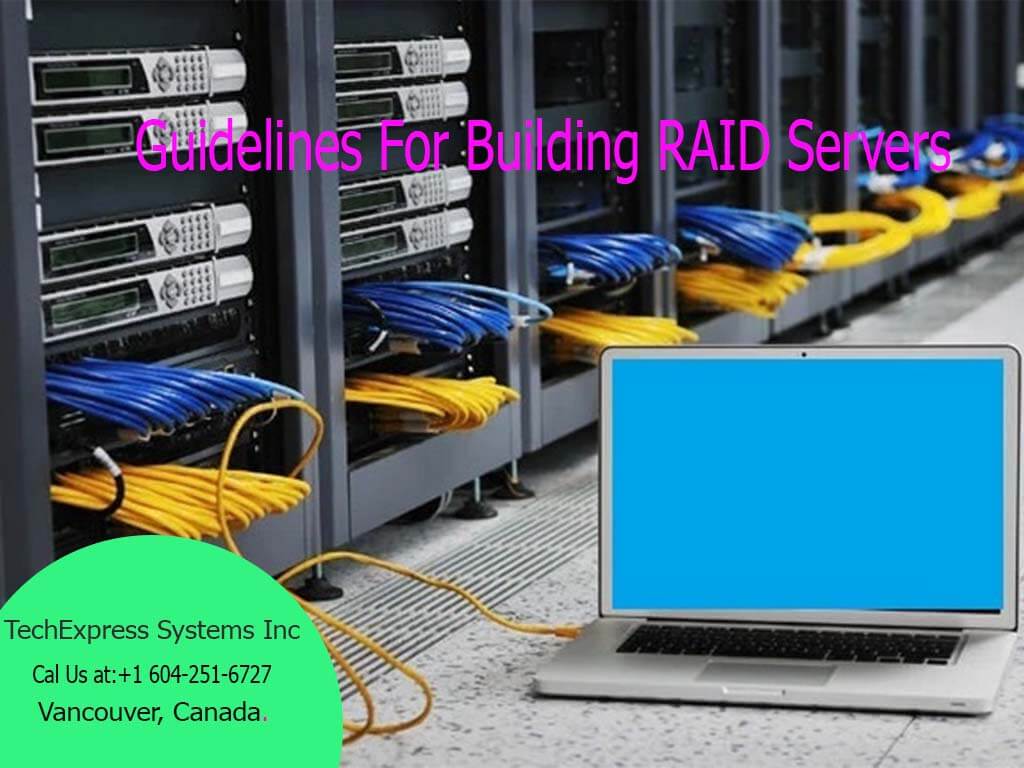TechExpress Systems Inc: Elevating Delta's IT Support Services
In the vibrant and innovative tech landscape of Delta, British Columbia, Techexpress Systems Inc. stands out as a leading provider of IT support services. With a growing demand for robust IT solutions and reliable support, Techexpress Systems Inc. has become a crucial player in empowering Delta's businesses and individuals to thrive in the digital age. This article explores the pivotal role of Techexpress Systems Inc. In Delta's IT support sector, the services they offer, and their impact on the local tech ecosystem.
Techexpress Systems Inc: A Beacon of IT Support in Delta
Techexpress Systems Inc. is a Delta-based IT support company known for its comprehensive and customer-centric approach to IT services. It caters to a diverse clientele, including businesses, educational institutions, and individuals, offering a wide array of IT solutions designed to enhance productivity and security.
Key Services Offered by Techexpress Systems Inc
Managed IT Services: Techexpress Systems Inc. offers comprehensive managed IT services, providing clients with proactive monitoring, and maintenance. And strategic IT planning to minimize downtime and enhance operational efficiency.
Cybersecurity Solutions: Protecting sensitive data is paramount. Techexpress Systems Inc. assists clients in Delta by implementing robust cybersecurity measures, safeguarding against evolving cyber threats.
Cloud Integration: The Company specializes in cloud computing solutions, helping organizations seamlessly transition to and maintain cloud-based operations, thus ensuring data accessibility from anywhere.

Hardware and Software Maintenance: Regular maintenance and updates for hardware and software are fundamental to preventing operational disruptions. Techexpress Systems Inc. keeps systems current and efficient.
Help Desk and Technical Support: Quick and efficient response to technical issues is a priority. Techexpress Systems Inc. offers help desk and technical support services to address user inquiries and troubleshoot problems in real time.
Delta IT Support: Fostering Technological Growth in Delta
Delta, with its rapidly growing tech scene, relies on expert IT support services to meet the needs of businesses, educational institutions, and individuals. Delta IT Support, powered by Techexpress Systems Inc., plays an essential role in the region's tech ecosystem:
Business Empowerment: By providing robust IT support, Delta IT Support enables businesses to focus on innovation and expansion. Thus contributing to the city's reputation as a burgeoning tech hub.
Tech Community Engagement: Techexpress Systems Inc. actively engages with the local tech community in Delta through participation in events. Workshops, and collaborations, fostering knowledge-sharing and networking.
Attracting Investment: A strong support infrastructure enhances Delta's attractiveness to tech investors and entrepreneurs, fueling further growth and economic development.
Local Job Creation: Techexpress Systems Inc. creates employment opportunities for local IT professionals. Strengthening the Delta economy and retaining tech talent within the community.
Techexpress Systems Inc and Delta IT Support - Shaping Delta's Tech Landscape
In Delta's tech-savvy environment, Techexpress Systems Inc. and Delta IT Support have emerged as key pillars of the local tech landscape. They provide vital IT support services that empower businesses, enhance connectivity, drive innovation, and foster economic growth. As technology continues to evolve, Techexpress Systems Inc. And Delta IT Support will remain integral to keeping Delta's businesses, institutions, and individuals connected, secure, and competitive in the digital age.
Bridge the Distance: Exploring the Possibilities of Remote Desktop Operating Systems
In today's interconnected world, physical location often takes a backseat to digital accessibility. The ability to access desktops remotely unlocks a world of convenience and flexibility, transforming how we work, learn, and even play. Enter the remote desktop operating system (RDOS), your digital bridge connecting you to remote desktops anytime, anywhere.
Why Embrace a Remote Desktop Operating System?
Imagine accessing your work computer from a cozy cafe, collaborating on projects with colleagues across continents, or playing demanding games on a less powerful device. These are just a few possibilities unlocked by RDOS:
- Remote Work Revolution: RDOS empowers remote workforces, enabling secure access to company desktops from any location with an internet connection. Increased flexibility and improved work-life balance are just the beginning.
- Global Collaboration: Teams spread across the globe can seamlessly collaborate on projects in real time through shared remote desktops, fostering better communication and streamlined workflows.
- Device Agnostic Gaming: Play high-performance games on any device – even low-powered laptops or tablets – by streaming them from a powerful remote desktop equipped with a dedicated graphics card.
- Disaster Recovery Lifeline: In case of hardware failures or natural disasters, RDOS ensures business continuity by providing access to critical data and applications stored on a remote server.
Navigating the RDOS Landscape:
With various RDOS solutions available, choosing the right one can feel like navigating a foreign digital land. Fear not, intrepid explorers! Here's your map to guide you:
- Open-Source vs. Proprietary: Open-source options like X2Go and Apache Guacamole offer flexibility and customization, while proprietary solutions like Microsoft Remote Desktop and Chrome Remote Desktop provide user-friendly interfaces and wider compatibility.
- Security and Encryption: Ensure your chosen RDOS employs robust security features like two-factor authentication and data encryption to safeguard your information during remote access.
- Performance and Latency: Consider your internet connection speed and desired experience. High-bandwidth applications like gaming may require specialized solutions with low latency.
- Cost and Features: Compare pricing models and available features to find an RDOS that fits your budget and needs. Some offer free basic versions, while others have premium plans with advanced functionalities.
- Ease of Use: Choose an RDOS with a user-friendly interface and straightforward setup process, especially if you're not tech-savvy.
Building Your Digital Bridge:
Investing in an RDOS isn't just about convenience. It's about unlocking new possibilities and revolutionizing the way you work, collaborate, and interact with technology. By choosing the right partner, you can build a secure and reliable digital bridge that connects you to your desired virtual workspace, regardless of physical location.
Explore cloud-based RDOS solutions for scalability and ease of access from any device with an internet browser.
So, embrace the power of remote desktop operating systems and watch your digital horizons expand. Whether you're a remote worker. A global collaborator, or a tech-savvy gamer, your journey across the RDOS landscape awaits. Get ready to bridge the distance and unlock a world of possibilities.
Navigating the Digital Landscape: The Role of Vancouver IT Support Professionals
In the ever-evolving landscape of technology, businesses and individuals alike rely on the expertise of IT support professionals to navigate the complexities of the digital world. Vancouver, a vibrant and tech-savvy city on Canada's west coast, boasts a thriving community of IT support professionals who play a crucial role in ensuring seamless operations, troubleshooting technical issues, and fortifying digital security. This article explores the significance of Vancouver IT support professionals and sheds light on the key responsibilities and skills that define their role.
The Importance of IT Support:
Business Continuity:
Vancouver's diverse business landscape, ranging from startups to established enterprises, underscores the need for uninterrupted IT services. IT support professionals in the city contribute to business continuity by swiftly addressing technical issues, minimizing downtime, and ensuring the smooth operation of digital infrastructure.
Cybersecurity Vigilance:
With the increasing prevalence of cyber threats, IT support professionals play a pivotal role in fortifying digital security. From implementing robust cybersecurity measures to conducting regular vulnerability assessments, these experts are at the forefront of safeguarding sensitive data against malicious actors.
Adaptation to Technological Advances:
Vancouver is known for embracing technological innovations, and IT support professionals in the city are instrumental in helping businesses stay at the cutting edge. Whether it's integrating new software, optimizing network infrastructure, or facilitating the adoption of emerging technologies, these professionals ensure that organizations stay competitive in a rapidly changing digital landscape.
Key Responsibilities of Vancouver IT Support Professionals:
Technical Troubleshooting:
IT support professionals in Vancouver are adept at diagnosing and resolving technical issues. Whether it's hardware malfunctions, software glitches, or network connectivity problems, their expertise allows for swift and effective problem resolution.

Network Management:
Managing and optimizing network infrastructure is a crucial aspect of the role. IT support professionals ensure that businesses in Vancouver have reliable and efficient networks, facilitating seamless communication and data transfer.
Data Security and Compliance:
Vancouver IT support prioritize data security, implementing encryption, access controls, and other measures to safeguard sensitive information. They also stay informed about data protection regulations and ensure that businesses remain compliant with relevant laws.
User Training and Support:
Beyond issue resolution, IT support professionals in Vancouver actively engage in user training and support. They empower employees with the knowledge and skills needed to navigate digital tools and platforms effectively.
Proactive Monitoring and Maintenance:
Adopting a proactive approach, IT support professionals monitor systems for potential issues and conduct regular maintenance to prevent downtime. This proactive stance contributes to the overall reliability and performance of IT infrastructure.
Skills and Qualities of Vancouver IT Support Professionals:
A strong foundation in IT fundamentals, including hardware, software, and networking, is essential. IT support professionals stay abreast of technological advancements to provide cutting-edge solutions.
Communication Skills:
Effective communication is key, both in troubleshooting technical issues and in educating users. IT support professionals in Vancouver excel in conveying complex information clearly and understandably.
Problem-Solving Abilities:
The ability to analyze and solve problems efficiently is a hallmark of a skilled IT support professional. Vancouver's tech professionals thrive in dynamic environments, addressing challenges with creativity and resourcefulness.
Customer Service Orientation:
A customer-centric approach is vital, as IT support professionals in Vancouver interact with end-users regularly. Their commitment to delivering exceptional service enhances the overall user experience.
IT support professionals play a vital role in shaping the technological landscape of the city. From troubleshooting technical issues to fortifying cybersecurity and facilitating technological advancements, these professionals are the backbone of digital operations in businesses and organizations. As Vancouver continues to embrace innovation, the expertise and dedication of IT support professionals will be indispensable in ensuring a resilient and thriving digital ecosystem.
A Comprehensive Guide: Building RAID Servers for Enhanced Data Storage and Security
In the realm of data storage, reliability, speed, and security are paramount considerations. Redundant Array of Independent Disks (RAID) technology has emerged as a powerful solution to address these concerns by combining multiple hard drives into a single logical unit. This article provides a comprehensive guide on the essential guidelines for building RAID server, emphasizing the key factors to consider in maximizing data storage performance and safeguarding against potential failures.
Understanding RAID:
RAID technology allows for the simultaneous use of multiple hard drives to enhance performance, increase storage capacity, and provide fault tolerance. There are several RAID levels, each with its unique configuration and advantages. Common RAID levels include RAID 0, RAID 1, RAID 5, RAID 10, and more.
Guidelines for Building RAID Server:
Assess the Purpose: Understand the specific needs of your server – whether it's for high-performance computing, data redundancy, or a balance between the two.
Evaluate Capacity: Determine the required storage capacity based on your data volume and growth projections.
Select the Appropriate RAID Level:
RAID 0 for Performance: Ideal for applications requiring high-speed data access, RAID 0 strips data across multiple drives, maximizing performance. However, it lacks redundancy.
RAID 1 for Redundancy: Offers mirroring for data redundancy, with data being duplicated on separate drives. RAID 1 provides fault tolerance but does not increase performance.

Balance for RAID 5: Balances performance and redundancy by stripping data across multiple drives with distributed parity. It is suitable for applications requiring both speed and fault tolerance.
RAID 10 for Performance and Redundancy: Combines mirroring and striping for enhanced performance and redundancy. RAID 10 requires a minimum of four drives.
Choose Quality Hardware:
Compatible Drives: Ensure compatibility between hard drives and RAID controller. Select enterprise-grade drives designed for continuous operation.
RAID Controller: Invest in a reliable RAID controller to manage the array. It's crucial for optimal performance and fault tolerance.
Consider Hot-Swappable Drives:
Hot-Swap Bays: Opt for servers with hot-swappable drive bays, allowing you to replace a failed drive without shutting down the system. This feature minimizes downtime and ensures continuous operation.
Implement Regular Backups:
Backup Strategy: While RAID provides fault tolerance, it is not a substitute for regular backups. Implement a robust backup strategy to safeguard against catastrophic failures or data corruption.
Configure RAID Settings Properly:
BIOS/UEFI Settings: Access the server's BIOS or UEFI to configure RAID settings. Set the RAID mode and define the array parameters.
RAID Initialization: Allow time for the RAID array to initialize after configuration. This process varies based on the RAID level and the number of drives.
Monitor and Maintain:
Monitoring Tools: Utilize RAID management tools to monitor the health and performance of the array. Regularly check for any warning signs or potential issues.
Firmware and Software Updates: Keep RAID controller firmware and software up to date to benefit from performance enhancements and security patches.
Building RAID servers requires careful consideration of specific needs, hardware compatibility, and the desired balance between performance and redundancy. By following these guidelines, organizations, and individuals can construct robust RAID configurations that not only optimize data storage and access but also provide a safety net against potential hardware failures. Whether for high-performance computing environments, data-intensive applications, or mission-critical operations, a well-designed RAID server ensures reliability and data integrity, contributing to a resilient and efficient storage infrastructure.
Navigating the Future of Work with Remote Desktop Operating Systems
As the global workforce continues to evolve, the demand for flexible and efficient remote working solutions has never been greater. Remote desktop operating systems (RDOS) emerge as a pivotal tool in enabling seamless collaboration and access to resources from virtually anywhere. This article explores the concept of remote desktop operating systems, their advantages, and how they are transforming the way we work in an increasingly interconnected world.
Understanding Remote Desktop Operating Systems:
A Remote Desktop Operating System, at its core, allows users to access and interact with a computer or server from a remote location. This enables individuals to work on a machine physically located elsewhere, accessing files, applications, and resources as if they were directly in front of the device. The significance of RDOS becomes evident in scenarios where remote collaboration, access to centralized data, and efficient resource utilization are paramount.
Advantages of Remote Desktop Operating Systems:
RDOS provides unparalleled accessibility to users, allowing them to connect to their work environment from virtually any location with an internet connection. This flexibility is especially valuable for professionals who need to work on the go or from different geographic locations.
Collaboration and Productivity:
Remote desktop systems foster collaboration by enabling multiple users to access the same system simultaneously. This is particularly beneficial for team projects, as team members can collaborate in real time, accessing shared files and applications seamlessly.
Resource Centralization:
Centralizing resources on a server or a data center through RDOS streamlines resource management. This ensures that critical data and applications are stored in a secure and controlled environment, reducing the risk of data loss and enhancing overall data security.
Cost-Effective Infrastructure:
RDOS can contribute to cost savings by centralizing computing resources. Instead of investing in powerful individual machines for each user, organizations can allocate resources more efficiently, optimizing hardware usage and reducing overall IT infrastructure costs.
Security Measures:
RDOS often includes robust security features, including encryption protocols, multi-factor authentication, and access controls. This ensures that remote connections are secure, protecting sensitive data from potential threats.
Device Independence:
Users can access RDOS from a variety of devices, including desktops, laptops, tablets, and even smartphones. This device independence promotes flexibility and accommodates various work preferences and needs.
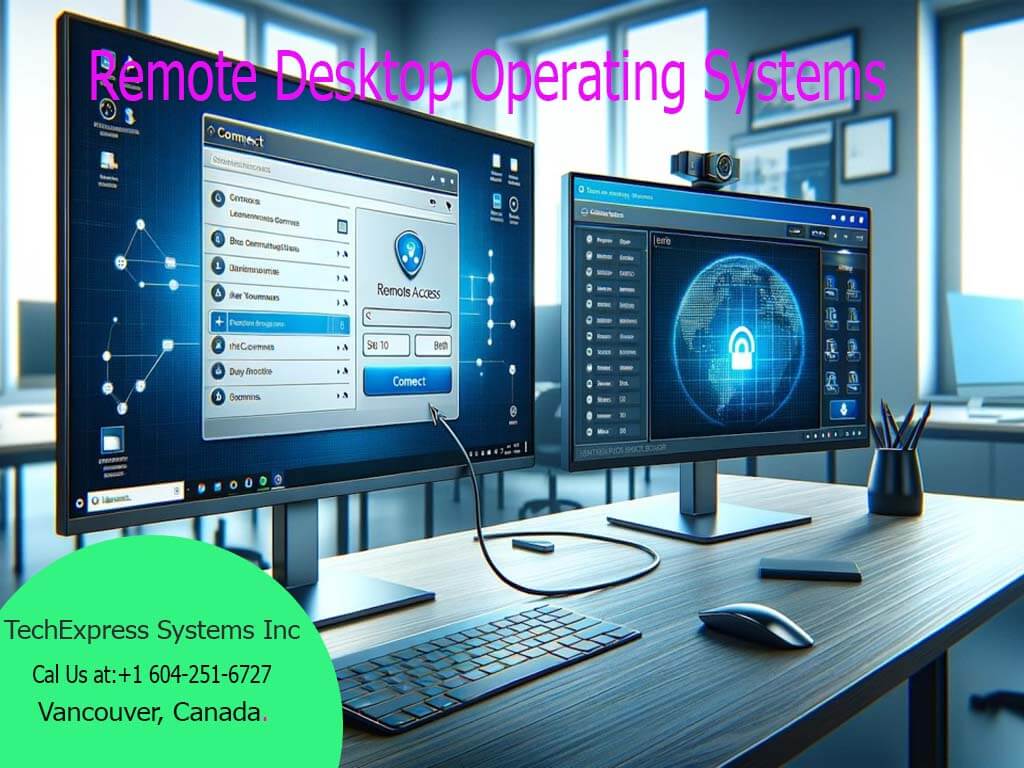
Scalability:
RDOS solutions are scalable, allowing organizations to adapt to changing work environments and growing user bases. As the workforce expands or contracts, the RDOS infrastructure can be adjusted accordingly, providing a dynamic and scalable solution.
Implementation and Best Practices:
Select an RDOS solution that aligns with the specific needs of your organization. Consider factors such as scalability, security features, and compatibility with existing IT infrastructure.
Network Infrastructure:
Ensure a robust and reliable network infrastructure to support remote desktop connections. A stable and high-speed internet connection is crucial for a seamless user experience.
Security Protocols:
Implement strong security measures, including encryption, secure access controls, and regular security audits. This is essential to protect sensitive data and maintain the integrity of remote connections.
User Training and Support:
Provide adequate training for users to ensure they understand how to use the RDOS effectively. Additionally, establish a support system to address any technical issues promptly and minimize downtime.
In an era where flexibility and collaboration are integral to success. Remote desktop operating systems have emerged as a cornerstone of the modern workplace. Their ability to provide accessibility, enhance collaboration, and centralize resources. Offering cost-effective solutions positions RDOS as a critical tool for organizations embracing the remote work paradigm. As technology continues to advance, the role of remote desktop operating systems is likely to evolve, shaping the future of work and redefining the boundaries of what is possible in the realm of remote collaboration.
Mastering Data Redundancy: Guidelines for Building RAID Servers
In the realm of data storage and server management, redundancy and reliability are paramount. RAID (Redundant Array of Independent Disks) servers provide an effective solution by distributing data across multiple drives to enhance performance and safeguard against data loss. This article delves into the guidelines for building RAID servers, outlining key considerations for ensuring optimal performance, fault tolerance, and data protection.
Understanding RAID:
RAID configurations come in various levels, each offering a unique balance of performance, redundancy, and capacity. The most common RAID levels include RAID 0, RAID 1, RAID 5, RAID 6, and RAID 10. Before delving into the guidelines for building RAID servers, it's essential to understand the characteristics and advantages of each RAID level to align them with specific use cases.
Guidelines for Building RAID Servers:
Determine the primary purpose of the RAID server. Whether it's for high-performance computing, data backup, or a balance of both, understanding the intended use is crucial for selecting the appropriate RAID level.
Choose the Right RAID Level:
RAID 0 for Performance: Ideal for applications that require high-speed data access, RAID 0 strips data across multiple drives without redundancy. However, it offers no fault tolerance, making it unsuitable for critical data.
RAID 1 for Redundancy: Provides mirroring, ensuring that data is duplicated on two drives. While it doesn't offer the same performance boost as RAID 0, RAID 1 enhances fault tolerance.
RAID 5 and RAID 6 for Balance: These levels offer a combination of performance and redundancy by distributing parity data across multiple drives. RAID 6 provides an extra layer of fault tolerance compared to RAID 5.

RAID 10 for Optimal Performance and Redundancy: Combining mirroring and striping, RAID 10 offers both performance and redundancy. It requires a higher number of drives but provides enhanced fault tolerance.
Select High-Quality Hardware:
Invest in reliable, enterprise-grade hard drives and RAID controllers. Quality hardware ensures stability, longevity, and optimal performance for the RAID server.
Consider Scalability:
Plan for future expansion by selecting a that allows for scalability. RAID 1, RAID 5, and RAID 6 are generally more scalable compared to RAID 0.
Implement Regular Monitoring and Maintenance:
Set up monitoring tools to track the health and performance of the RAID array. Regularly check for failed drives, and replace them promptly to maintain data integrity.
Backup Strategies:
While RAID provides redundancy, it's not a substitute for regular backups. Implement a robust backup strategy to ensure data recovery in case of catastrophic events or multiple drive failures.
Configure RAID Controller Settings:
Familiarize yourself with the RAID controller's settings and configure them according to the intended use. Adjust parameters such as stripe size and cache settings to optimize performance.
Documentation and Labeling:
Keep detailed documentation of the RAID configuration, including the RAID level, drive specifications, and controller settings. Properly label drives to facilitate easy identification in case of replacements or upgrades.
Building RAID servers requires careful planning and consideration of specific needs and use cases. By adhering to these guidelines and understanding the nuances of each RAID level, administrators can create robust and reliable storage solutions that offer enhanced performance, fault tolerance, and data protection. A well-designed RAID server not only ensures the integrity of critical data but also provides a foundation for scalable and efficient storage infrastructure.
Vancouver's Digital Guardians: Unveiling the World of IT Support Professionals
Vancouver, a city of breathtaking beauty and bustling innovation, thrives on its vibrant tech scene. But behind every sleek storefront and innovative startup lies a hidden force: the Vancouver IT support professional, your digital guardian angel navigating the ever-evolving technological landscape.
Why Partner with a Vancouver IT Support Professional?
Imagine the frustration: a crashed server halting your entire operation, a cyberattack compromising sensitive data, or a software glitch hindering crucial projects. These are the digital dragons lurking in the shadows, ready to disrupt your business. Here's how a Vancouver IT support professional can be your digital hero:
- Local Expertise: They understand the unique needs and challenges of Vancouver's business landscape, offering tailored solutions specific to your industry and regulations.
- Proactive Problem-Solvers: Forget scrambling to fix issues as they arise. Vancouver IT support professionals proactively monitor your systems, identifying and resolving potential problems before they impact your operations.
- Cybersecurity Champions: Data breaches are a growing concern. Your digital guardian implements robust security measures like firewalls, intrusion detection, and access control to safeguard your information and keep your systems protected.
- Efficiency Evangelists: They optimize your IT infrastructure, streamline workflows, and recommend tools to boost productivity, allowing you to focus on your core business goals.
- Peace of Mind Purveyors: Knowing your IT environment is in expert hands grants you the mental space to strategize, innovate, and drive your business forward.
Navigating the Maze of IT Support:
With a multitude of IT support professionals in Vancouver. Choosing the right one can feel like searching for a mythical Sasquatch. Fear not, tech explorers! Here's your map to finding the perfect digital partner:
- Experience and Industry Focus: Seek a provider with a proven track record of success in your industry. They'll understand your specific needs and have the tools to tackle your unique tech challenges.
- Services Offered: Choose a provider offering a comprehensive range of services, from network support and cybersecurity to cloud solutions and data backup. They should be your one-stop shop for all your IT needs.
- Reputation and References: Consult online reviews and ask for recommendations from colleagues and business owners. A provider with satisfied clients is a trustworthy guide on your digital journey.
- Communication and Transparency: Open communication is key. Choose a provider that is responsive, proactive, and committed to keeping you informed every step of the way.
- Cost and Flexibility: Compare pricing plans and ensure the provider offers transparent breakdowns and flexible options to fit your budget. Avoid hidden fees in the digital maze!
Emerging from the Labyrinth, Empowered:
Investing in a Vancouver IT support professional isn't just a necessary expense; it's a strategic investment in your business's future. By partnering with the right provider, you can unlock the full potential of your technology, enhance security, and achieve operational excellence. Emerge from the tech labyrinth, empowered and ready to conquer your business goals with a digital ally by your side.
Attend industry events and network with other business owners to gather valuable insights and recommendations for Vancouver IT support providers.
Remember, in today's digital world, technology is your business's backbone. With the right Vancouver IT support professional by your side, you can ensure its strength, stability, and resilience, allowing your business to soar to new heights. So, embrace the power of local IT expertise and watch your Vancouver vision flourish in the digital age.
Navigating the Skies of Digital Transformation: The Vital Role of a Cloud Migration Company
In the rapidly evolving landscape of modern business, the migration of IT infrastructure to the cloud has become a strategic imperative for organizations seeking agility, scalability, and cost-effectiveness. This shift, however, is a complex undertaking that requires expertise, precision, and careful planning. Enter the Cloud Migration Company, a specialized entity that plays a pivotal role in guiding businesses through the intricacies of transitioning to cloud-based solutions. This article explores the critical functions of these companies, the benefits of cloud migration, and the considerations that organizations must bear in mind as they embark on this transformative journey.
The Crucial Role of Cloud Migration Companies:
A Cloud Migration Company serves as a guide and facilitator for organizations looking to transition from on-premises or legacy systems to cloud-based infrastructures. This process, known as cloud migration, involves moving applications, data, and other business elements to cloud environments, such as public or private clouds. The expertise offered by Cloud Migration Companies is indispensable in ensuring a seamless and optimized transition.
Key Functions of Cloud Migration Companies:

Cloud Migration Companies conduct a thorough assessment of an organization's existing infrastructure, applications, and data. This evaluation informs the creation of a comprehensive migration plan, outlining the steps, timelines, and potential challenges of the migration process.
Infrastructure Design and Configuration:
Based on the assessment, these companies design and configure the cloud infrastructure to meet the specific needs of the organization. This involves selecting the appropriate cloud services, configuring security measures, and optimizing the architecture for performance and scalability.
Data Migration:
One of the critical aspects of cloud migration is the seamless transfer of data from on-premises servers to the cloud. Cloud Migration Companies employ best practices to ensure the integrity, security, and efficient migration of data.
Application Migration:
Migration of applications is a complex task that requires careful consideration of dependencies, integrations, and performance requirements. Vancouver Cloud migration company specializes in migrating applications to the cloud while minimizing disruptions to business operations.
Security Implementation:
Security is a paramount concern during cloud migration. These companies implement robust security measures, including encryption, access controls, and compliance with industry regulations, to protect the organization's data and applications in the cloud.
Testing and Validation:
Cloud Migration Companies conduct thorough testing of the migrated infrastructure and applications to ensure functionality, performance, and security. This phase helps identify and address any issues before full deployment.
Benefits of Vancouver Cloud Migration:
Scalability and Flexibility:
Cloud migration allows organizations to scale their infrastructure up or down based on demand. This flexibility ensures that resources can be aligned with business needs, optimizing cost-effectiveness.
Cost Savings:
By transitioning to the cloud, organizations can often reduce capital expenditures on hardware and maintenance. Cloud services typically operate on a pay-as-you-go model, allowing businesses to pay for the resources they consume.
Enhanced Collaboration:
Cloud-based solutions facilitate collaboration among geographically dispersed teams. With data and applications accessible from anywhere with an internet connection, teams can work collaboratively, promoting productivity and innovation.
Automatic Updates and Maintenance:
Cloud service providers handle the maintenance and updates of the underlying infrastructure and services. This relieves organizations of the burden of routine maintenance tasks, allowing them to focus on core business activities.
Considerations for Vancouver Cloud Migration Company:
Organizations must ensure that their chosen cloud provider complies with industry regulations and meets any specific legal requirements governing data storage and processing.
Data Governance and Security:
Security is a top priority during cloud migration. Implementing robust security measures and ensuring data governance practices are in place is crucial to protect sensitive information.
Integration with Existing Systems:
Smooth integration with existing systems and applications is essential. Organizations need to consider how the migration will impact current workflows and ensure that integrations are seamless.
Training and Change Management:
Cloud migration often involves a shift in how employees interact with IT resources. Adequate training and change management initiatives are crucial to ensure a smooth transition and acceptance of the new cloud-based environment.
As organizations embrace the digital era, the role of a Cloud Migration Company becomes increasingly vital. These specialized entities navigate the complexities of cloud migration, guiding businesses toward a future of enhanced efficiency, scalability, and innovation. By leveraging the expertise of Cloud Migration Companies, organizations can embark on a transformative journey that not only optimizes their IT infrastructure but also positions them to thrive in the dynamic landscape of modern business. The collaboration between organizations and Cloud Migration Companies is a strategic alliance that propels businesses into the skies of digital transformation, unlocking new possibilities and opportunities for growth.
Enhancing Business Resilience: The Role of Richmond IT Support
In today's rapidly evolving business landscape, where technology plays a pivotal role in operations, having a reliable IT support system is crucial for the success and resilience of any organization. Richmond, with its vibrant business community, has witnessed a growing demand for robust IT support services. This article explores the significance of Richmond IT support in fostering business growth, ensuring cybersecurity, and enhancing overall operational efficiency.
Driving Business Growth with Richmond IT Support:
Richmond's business environment is dynamic and competitive, requiring companies to stay ahead of technological advancements to remain relevant. A dedicated IT support system in Richmond can contribute significantly to business growth by providing timely solutions, troubleshooting technical issues, and implementing cutting-edge technologies. From managing software updates to optimizing network infrastructure, IT support services enable businesses to focus on their core competencies while ensuring a seamless technological experience.
Ensuring Cybersecurity:
The increasing frequency and sophistication of cyber threats have made cybersecurity a top priority for businesses across industries. Burnaby IT support services play a critical role in safeguarding sensitive data, preventing cyber attacks, and ensuring compliance with industry regulations. From implementing robust firewalls to conducting regular security audits, IT support professionals in Richmond work diligently to create a secure digital environment for businesses, protecting them from potential cyber threats.

Enhancing Operational Efficiency:
Efficiency is the cornerstone of successful business operations, and IT support services in Richmond are instrumental in achieving this goal. These services help optimize IT infrastructure, streamline processes, and ensure the smooth functioning of digital systems. Whether it's resolving hardware issues, addressing software glitches, or providing quick technical assistance, Richmond IT support ensures minimal downtime and maximum productivity.
Tailored Solutions for Diverse Businesses:
Burnaby IT support services understand the unique needs of businesses operating in various industries. Whether it's healthcare, finance, manufacturing, or retail. IT support professionals in Richmond offer tailored solutions that align with specific business requirements. This customization ensures that businesses receive the most relevant and effective IT support to meet their industry-specific challenges and objectives.
Proactive Problem Solving in IT Support Service:
Burnaby IT support providers adopt a proactive approach to problem-solving. Rather than waiting for issues to arise, they anticipate potential challenges, implement preventive measures, and continuously monitor systems to identify and address issues before they impact operations. This proactive stance helps businesses avoid costly downtime and ensures a resilient and reliable IT infrastructure.
In conclusion, IT support services are integral to the success and resilience of businesses in the region. By driving growth, ensuring cybersecurity, enhancing operational efficiency, providing tailored solutions, and adopting a proactive problem-solving approach. IT support professionals in Richmond empower businesses to navigate the complexities of the modern digital landscape. As businesses continue to evolve, the role of IT support in Richmond will remain crucial in ensuring sustained success and adaptability to emerging technological trends.
Mastering Data Redundancy: Guidelines for Building RAID Servers
In the realm of data storage and server management, redundancy and reliability are paramount. RAID (Redundant Array of Independent Disks) servers provide an effective solution by distributing data across multiple drives to enhance performance and safeguard against data loss. This article delves into the guidelines for building RAID servers, outlining key considerations for ensuring optimal performance, fault tolerance, and data protection.
Understanding RAID Server:
RAID configurations come in various levels, each offering a unique balance of performance, redundancy, and capacity. The most common RAID levels include RAID 0, RAID 1, RAID 5, RAID 6, and RAID 10. Before delving into the guidelines for building RAID servers, it's essential to understand the characteristics and advantages of each RAID level to align them with specific use cases.
Guidelines for Building RAID Server:
Determine the primary purpose of the RAID server. Whether it's for high-performance computing, data backup, or a balance of both, understanding the intended use is crucial for selecting the appropriate RAID level.
Choose the Right RAID Level:
RAID 0 for Performance: Ideal for applications that require high-speed data access, RAID 0 stripes data across multiple drives without redundancy. However, it offers no fault tolerance, making it unsuitable for critical data.
RAID 1 for Redundancy: Provides mirroring, ensuring that data is duplicated on two drives. While it doesn't offer the same performance boost as RAID 0, RAID 1 enhances fault tolerance.

RAID 5 and RAID 6 for Balance: These levels offer a combination of performance and redundancy by distributing parity data across multiple drives. RAID 6 provides an extra layer of fault tolerance compared to RAID 5.
RAID 10 for Optimal Performance and Redundancy: Combining mirroring and striping, RAID 10 offers both performance and redundancy. It requires a higher number of drives but provides enhanced fault tolerance.
Select High-Quality Hardware:
Invest in reliable, enterprise-grade hard drives and RAID controllers. Quality hardware ensures stability, longevity, and optimal performance for the RAID server.
Consider Scalability:
Plan for future expansion by selecting a RAID configuration that allows for scalability. RAID 1, RAID 5, and RAID 6 are generally more scalable compared to RAID 0.
Implement Regular Monitoring and Maintenance:
Set up monitoring tools to track the health and performance of the RAID array. Regularly check for failed drives, and replace them promptly to maintain data integrity.
Backup Strategies:
While RAID provides redundancy, it's not a substitute for regular backups. Implement a robust backup strategy to ensure data recovery in case of catastrophic events or multiple drive failures.
Configure RAID Controller Settings:
Familiarize yourself with the RAID controller's settings and configure them according to the intended use. Adjust parameters such as stripe size and cache settings to optimize performance.
Documentation and Labeling:
Keep detailed documentation of the RAID configuration, including the RAID level, drive specifications, and controller settings. Properly label drives to facilitate easy identification in case of replacements or upgrades.
Building RAID servers requires careful planning and consideration of specific needs and use cases. By adhering to these guidelines and understanding the nuances of each RAID level, administrators can create robust and reliable storage solutions that offer enhanced performance, fault tolerance, and data protection. A well-designed RAID server not only ensures the integrity of critical data but also provides a foundation for scalable and efficient storage infrastructure.

